#08 – THE SPIRE

ːsummer_magicː OTHER ISSUES OF THIS BLOG
ːQuestionsː CONSOLIDATED Q&A THREAD
THE SPIRE
The Spire is your home, and the way it looks reflects your strategy chosen to complete the main campaign. Between two different campaigns of the same player, the Spires may very much differ: one may boast expansive underground caves while another may be crowned with a ring of levitating gardens. There's no plan for "the perfect" Spire, as every time you will start the main campaign, you'll be making decisions unique to your own situation: the disciples at your command, the resources available within reach, and the unique events that may have happened on the global map of the world.
THE SPIRE AT THE START OF THE CAMPAIGN
At the start of the campaign, your Spire looks pretty much like any other player's Spire – the differences in the starting setup, if any, will depend on the character generation quest at the start of the game, and as such will be minor (if any).
- Every Spire will have MAGE'S QUARTERS – the place where your mage character resides, where he or she sleeps and receives guests. By type, it's a combination of a living room and a small warehouse (to store the most dear / valuable items). It is important to note that this room provides comfort for the mage and lends prestige to the mage's office (you will read more about purposes of rooms later in this blog).
Imagine coming to see your master as one of the disciples, and finding yourself in a room full of ancient artefacts, with a ball of fire suspended in mid-air as a sort of a fireplace. Wouldn’t you pay a little more attention to the mage’s instruction? Or it could work the other way, of course, where a disciple with ascetic traits would actually sneer at a lush office, while a small bare room would impress her the most. - The other room (or rooms, in this case) present in every Spire at start, are LIVING QUARTERS – this is where your disciples will rest after their day’s labor. At the start of the main campaign, you will already have enough Living Quarters to accommodate all of the disciples that join you in your campaign.
- Then there’s CLASSROOM, a place of study where you (or another teacher) will work with the disciples to increase their theoretical experience across a whole range of disciplines.
- Finally, every Spire at the start of the campaign will also already have a small WAREHOUSE used to house resources, items, ingredients and whatever else you’ll possess at that point (we’re covered the topic of resources in the previous blog post).
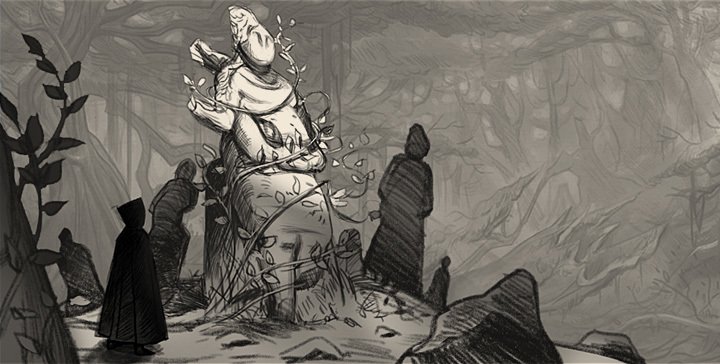
EXPANDING THE SPIRE
The Spire is made of rooms, with one room being the minimal unit. You can expand the Spire by adding rooms and floors (see below). Smaller rooms can be merged, to make larger rooms; and larger rooms can be split into smaller rooms – it all depends on your needs, and nothing here will prevent your progress by becoming impossible to change; since the Spire is a creation of magic, changes are always possible (though they’ll come at a cost).
When adding rooms, you will be building these to the left or to the right of the central staircase on the selected floor. There is a limit of having 5 rooms maximum in each direction. The further the room from the central staircase, the higher the cost of its construction. And if you don’t like the currently available floors, you can build new floors, which at minimum consist of a central staircase with one room to the left plus one to the right.
When adding floors, you can build either upwards or downwards. The further the floor from the ground (either up or down), the higher the cost of its construction. There is no limit to how much the Spire may expand upwards or downwards, except for the cost – however, do keep in mind that the higher the Spire becomes, the higher visibility it attains in its surrounding area, increasing the chance of attracting attention of the travelers passing by.
The cost of adding a new room (or a whole new floor) consists of resources (stone, wood, clay, iron) and magic energy of your mage. If you lack a specific resource, you can make up the difference by spending more magic energy. As such, you are always able to expand the Spire, the only question is – how taxing this will be, for the pool of your magic energy, which is by far the most valuable resource in the game.
One more thing: while regular rooms can be built by a mage of any skill, there are certain special types of rooms (such as levitating, or rotating ones) that require an advanced skill of Astral Carpentry and some research done before becoming available for construction.
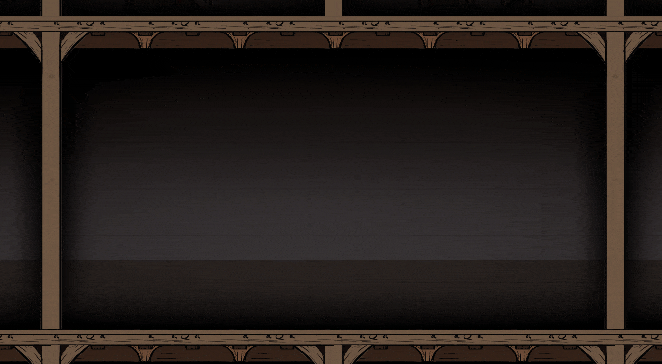
ROOMS AND THEIR PURPOSES
Once a room is constructed, it will need its purpose set. Is this a warehouse, a lab, or a prison cell? The good news is, the purpose of each room can be re-assigned at a later stage, so if you ran out of space to keep your prisoners, you can always convert your greenhouses into more cells – if this is what you’re after, in the current campaign.
There’s no limit on having multiple rooms of the same type, so that architecturally, rather than having a huge warehouse that will keep on expanding, you may end up having 5 smaller warehouses spread across different floors, which will serve your purpose equally well.
There are certain limitations to consider when assigning a room’s purpose: some types need to be strictly above the ground (for example, a GREENHOUSE); some – strictly below (for example, a CAVE). In other cases, the relative position of the room towards the ground floor will not prevent you from assigning the chosen purpose, but would rather add a positive or a negative modifier to its effectiveness (for example, the higher up the greenhouse is, the more natural light it receives – the more effective it is for growing plants).
Now, once you’ve built a room and set its purpose (from what’s available at your current skill level), you will want to make it active, and here each purpose has its own set of requirements in terms of what furniture you’ll need to install there, before it can start functioning as intended.
To start functioning, LIVING QUARTERS will need beds; a LIBRARY will need shelves; a WAREHOUSE will need cupboards; and so on.
This furniture can be either crafted or traded (as well as simply found somewhere and brought back; or received as a gift), but if you lack a chance to get it the “physical” way, you can always cast it, spending your magic energy. Initially, casting furniture instead of crafting it will be less efficient. But with time, as the Astral Carpentry skill of your mage and/or your disciples increases, you may be able to use your magic energy to cast such items that are simply impossible to craft in a regular way.
PRESTIGE AND EFFECTIVENESS
Each room has two main characteristics that determine how well it serves its purpose: the room’s effectiveness and the room’s prestige.
The effectiveness defines the direct function of the room, and can be increased by adding optional furniture or fixtures. For example, adding a glass roof to a GREENHOUSE significantly boosts up its production due to increased natural light; while adding candleholders to a CLASSROOM allows to study around the clock, whether it’s night-time or not; other things that increase the effectiveness of a CLASSROOM are learning tools, mounted exhibits and blackboards – all of these are optional items that make the room more efficient at serving its purpose.
As to the prestige of the room, this influences the motivation of disciples to spend time there. Items like portraits of famous mages of the ancient times will make a CLASSROOM more special. Items like elaborate candle-stands will have a similar effect on a WORKSHOP, or a MESS HALL.
It must be noted here, that some of the furniture and fixtures will come in the form of artefacts. For example, you may locate and bring back to the Spire something like a Magic Shelf, which would take the space of just 1 slot, but will provide 5 slots worth of storage; or, perhaps, you’ll receive as a gift a Candle of Concentration – a regular-sized candle that speeds up any sort of process happening in the room where it’s placed, be it study or mediation.
FURNITURE SLOTS
Each piece of furniture and fixtures requires special placement. For example, you cannot add daylight windows to a room that’s located underground; similarly, you cannot fit a huge Grand Alchemist Table into a small, basic Lab.
Each such item takes a number of slots and bears certain requirements as to where it can be placed – on the floor, on the walls, or on the ceiling; correspondingly, each room has a present number of slots that it allows to use for furniture. In this respect, smaller things offering the same effect / prestige are always better, as they leave more space for other decorations.
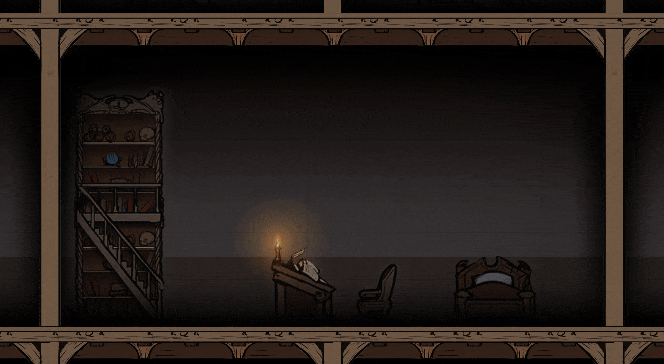
COMMON ROOM PURPOSES
Below is a list of some of the purposes that can be assigned to a room. Please note that this list is neither final, nor complete:
- MAGE’S QUARTERS – this is where your mage lives.
- LIVING QUARTERS – this is where your disciples live.
- CLASSROOM – a place of study, where characters gain theoretical experience from being taught by another person.
- LIBRARY – a place of study, where characters gain theoretical experience from reading books available in the Library.
- LAB – a place of research (theoretical experience in multiple fields) and crafting of potions and elixirs (practical Alchemy), where characters produce new items, gain practical and theoretical experience and advance in research.
- PRACTICE HALL – a place of experimentation, duels and battle magic where characters gain practical experience.
- WORKSHOP – a place where things are crafted (everything except potions/elixirs, which are produced in a Lab).
- WAREHOUSE – a place where you keep resources, items, ingredients and artefacts.
- TREASURY – a version of a Warehouse that is more secure (so that valuable artefacts, for example, can be less of a temptation for some greedy disciples – or visiting thieves).
- GLASSHOUSE – a place where herbs and plants grow, whether for use as food of as ingredients in creating potions.
- KENNELS – a place where monsters are kept/raised.
- PRISON CELLS – a place where characters (disciples or captives/prisoners) are kept.
- HOSPITAL – a place where characters are healed, whether with the help of someone with medical skills or not (though without a medic, this is going to only stop the outbreak but not address the cause).
- OBSERVATORY – a place where characters can observe the sky, read star signs, foretell the future, discover special spots on global map, and prepare horoscopes.
- WATCHTOWER – a room that increases the zone of directly visible part of the global map surrounding the Spire.
- MEDITATION ROOM – a room that allows to increase / use the skill of concentration, improving mood, health and restoring energy (mage’s or that of disciples).
- KITCHEN – a place where food items are crafted (e.g. field rations).
- MESS HALL – a place where disciples and mage consume food and socialize; without a Mess Hall, characters can still eat in their quarters, but without the social aspect and with less control of mage over the mood of disciples. As this is a room that every character visits daily, the level of prestige of this room carries a big impact over everyone in the Spire.
- GAME ROOM – a place where characters relax and socialize.
- DISTORTED ROOM – a room that cannot be constructed; this room may appear as a result of an accident during one of the experiments.
- PORTAL ROOM – we’ll talk about Portals, and Portal Room, a bit later in the blog, as this is a late-game feature that’s still being designed.
- MAGIC ENERGY ROOM – possibly, a room that may store and release magic energy; it’s not 100% confirmed yet that this room will be present at the launch of the game in Early Access.
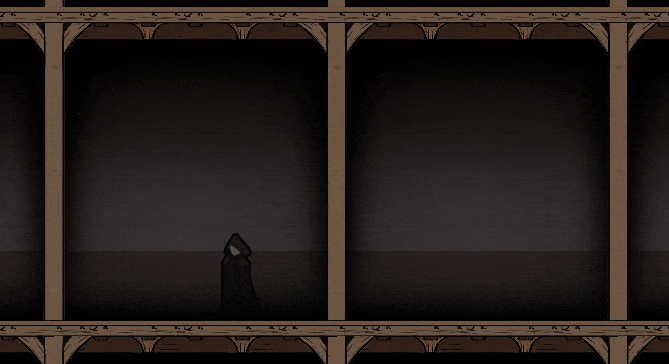
FARMING AND DEFENSE OF THE SPIRE
These topics are together because both of these things deal with the space outside of the Spire. We’re not yet certain how the actual farming will happen, except that it will be through a special type of quest, where you’ll command a party to go out and, say, plant, care for, and later harvest a specific crop.
As to the defense of the Spire, our current plan is to allow construction of a separate section outside (“the barrier”), which will include such things as:
- traps (physical and magical)
- moats and similar defensive constructs;
- monsters and animals planted to live in the space surrounding the Spire (i.e. between the moat and the actual walls of the Spire).
Whenever a party is detected outside of the Spire (having a good WATCHTOWER greatly helps with early detection), a quest marker appears, which allows you to send a party to confront the guests. Perhaps your disciples may prevent the attack by using magic to scare them away. Perhaps they may overpower the intruders, using battle magic. Or perhaps they may bribe them with gifts, and convince them that attempting to enter the Spire is really a pointless undertaking.
If prevention fails (or you don’t even want to try sending a “meet & greet” party), the incoming party has to best the barrier before they can set foot into the Spire. Maybe some of them will be wounded by the traps. Maybe some won’t be able to cross the moat. And maybe some will fall prey to the monsters and animals living by the gates.
Once the party (or the surviving part of it) crosses into the Spire, something called Close Encounter. Close Encounter is an obligatory quest that you cannot reject. If you fail at this quest, the campaign is over, as your mage will be imprisoned and burnt by the Inquisition – or simply killed on the spot (unless the intruders are thieves, in which case they’ll plunder but won’t kill, unless attacked). This is also the only combat quest where your mage may become a part of the party.
As this part of the game is still a work in progress, we’re certain that we’ll cover it in more detail in a few months, once our working prototype includes these areas.
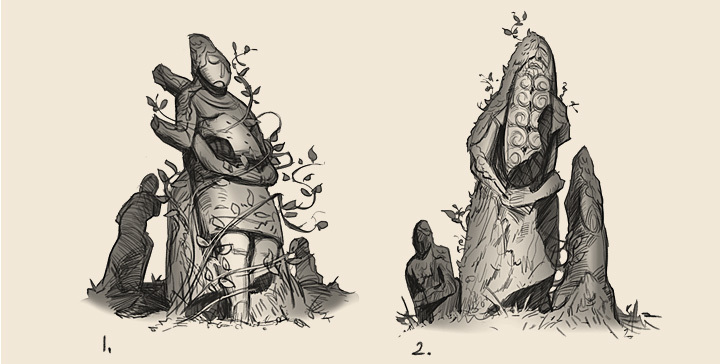
With this, we wish you all the best – and see you next week! (or sooner, if you join the official Discord server of the game ːgreengemstoneː).
–––

ːsummer_magicː official Discord server
ːsummer_magicː Twitter (game updates)
ːsummer_magicː Facebook (game updates)

ːmaliceː official Discord server
ːmaliceː Twitter (game updates)
ːmaliceː Facebook (game updates)

ːnotebookː Twitter (studio news)
ːnotebookː Facebook (studio news)
ːhypnoheartː "Behind the scenes" Instagram
ːfireappleː YouTube



















